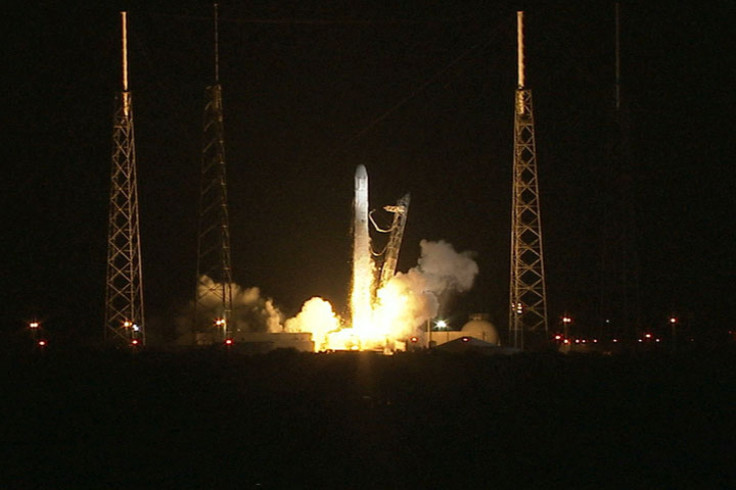SpaceX Dragon With NASA Cargo Lifts Off To International Space Station

A Space Exploration Technologies Corp. (SpaceX) Falcon 9 rocket, carrying its Dragon spacecraft, lifted off Sunday from Cape Canaveral Air Force Station in Florida at 8:35 p.m. EDT. Designated SpaceX CRS-1, it is NASA’s first contracted cargo delivery flight to the International Space Station (ISS).
As per NASA’s Commercial Resupply Services contract worth $1.6 billion, SpaceX will fly at least 12 cargo missions to the space station through 2016. It was the second launch of a Dragon capsule to ISS by SpaceX. The first launch took place last spring.
NASA said that the Dragon spacecraft will be tackled 7:22 a.m. Wednesday, Oct. 10, by Expedition 33 crew members Sunita Williams of NASA and Aki Hoshide of the Japan Aerospace Exploration Agency (JAXA), who will use the station's robotic arm to install the Dragon. The capsule will spend 18 days attached to the station before returning for a splashdown in the Pacific Ocean off the coast of southern California.
According to the space agency, the spacecraft has carried a total of 882 pounds of supplies to the orbiting laboratory, including 260 pounds of crew supplies, 390 pounds of scientific research, 225 pounds of hardware and several pounds of other supplies. It will also return a total of 1,673 pounds of supplies, including 163 pounds of crew supplies, 866 pounds of scientific research, 518 pounds of vehicle hardware and other hardware.
The returning cargo will also include a stockpile of astronauts' blood and urine samples. The samples – almost 500 of them – have been stored in freezers since Atlantis made the last shuttle flight in July 2011, the Associated Press reported.
Scientists believe that Dragon's ability to return cargo from the space station is critical for supporting scientific research in the orbiting laboratory's unique microgravity environment that can further help understand how humans can safely work, live and thrive in space for longer periods.
"This was a critical event in spaceflight tonight," said NASA Administrator Charles Bolden. "We're once again launching spacecraft from American soil with the supplies our astronauts need in space. NASA and the nation are embarking on an ambitious program of space exploration."
SpaceX is one of two companies that built and tested new cargo spacecraft under NASA's Commercial Orbital Transportation Services (COTS) program. Orbital Sciences is the other company participating in COTS.
"This was an operational mission, so we're operational (but that) doesn't mean we're going to stop learning and stop making these vehicles as reliable as possible," said SpaceX President Gwynne Shotwell during a press conference after the launch.
© Copyright IBTimes 2024. All rights reserved.












